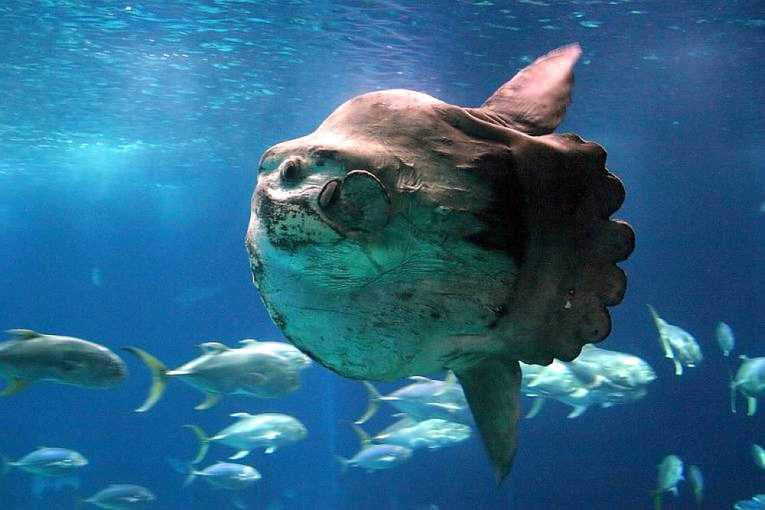The Big Head
of the sunfish occupies most of the 2.3 tons (>2000kg) of its mass, leaving its flattened cartilaginous body with fins here and there and the tail simply a stiff lobe. Growing very fast, the numerous young soon become puffer fish shaped (the puffer is a close relative) and then start adopting the strange compressed and buoyant disc that forms the adult. The genome was sequenced and a comparison with other fish prepared by Hailin Pan and many prominent collaborators from Kunming Institute of Zoology, the China National Genebank, the Universities of Copenhagen and Singapore, Biopolis (also in Singapore) and several other institutions.
Their paper is published in Gigascience as The genome of the largest bony fish, ocean sunfish (Mola mola), provides insights into its fast growth rate. Even in captivity, the animal is capable of gaining 400kg over 15 months. It is the genes that rule this strange metamorphosis with the degeneration of the vertebral column and the intriguing adoption of a flight-like movement of fins instead of the normal fish tail propulsion.
The genome reveals growth regulation by insulin-like factors and skeletal effects by collagen encoding genes that would produce the predominantly cartilaginous skeleton. A set of Mola genes are evolving much faster than other fish with which it was compared. Understandably, many of these genes control the growth pathway, including the controlling pituitary gland and the liver. The HOX genes that organise vertebrate body plans do not differ from the rest of the order to which Mola mola belongs, which is a surprise, given its head-dominated body shape.
The double larval stage of this species is also significant, especially considering that this fish is driven
by population explosions from some females that produce 300 million eggs. This is of course a record among vertebrates. The small fry resemble tiny puffer fish, with a tail fin and body spines, unlike the adult. The second larval stage sees a complete absorption of the tail, just as in a tadpole, while the large pectoral fins and the anal fins take over locomotory responsibilities. How the nervous system controls the flying
activity of the fins is still a point for debate and investigation.
These first papers on some of the most interesting fish genomes will lead to greater discoveries, but the research has been very valuable in connecting the vertebrate genomes we know already and encouraging further analysis of the genetic heritage we all possess. Who will be next on the genome stage? It probably won’t be long before even the least significant species may provide us with more and more surprising insights.










